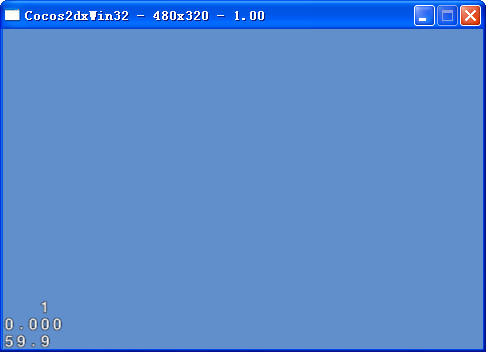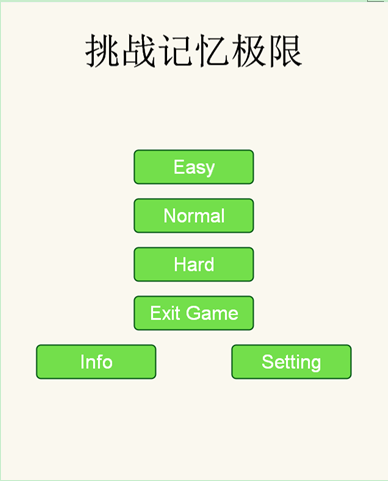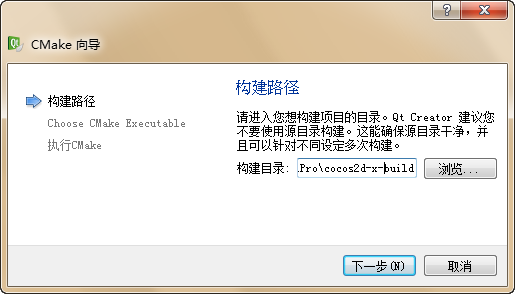学了几天Cocos2d-X后今天终于可以试试Cocos2d-X的跨平台开发了,由于条件的限制,我只会测试Cocos2d-X在Android平台上的开发,今天就以一个简单的文本测试Android上的效果,需要用到CCTextFieldTTF类,CCTextFieldTTF是一个显示文本控件的类用于输入文本和现实文本类似于Windows编程中的Static控件和Edit控件
程序实例:使用TextFieldTTF类创建一个文本,触摸文本弹出软键盘,并且可以通过软键盘向TextFieldTTF中输入文字
首先创建一个TextFieldTTF.h的头文件,在头文件中添加下面的代码
#ifndef __TextFieldTTF_H__ #define __TextFieldTTF_H__ #include "cocos2d.h" USING_NS_CC; class TextFieldTTF : public cclayer { public: bool init(); static CCScene* scene(); //用于处理触摸事件 bool ccTouchBegan(CCTouch*,CCEvent*); //用于在程序中创建一个文本控件 CCTextFieldTTF* textEdit; CREATE_FUNC(TextFieldTTF); }; #endif // __HELLOWORLD_SCENE_H__
#include "TextFieldTTF.h"
CCScene* TextFieldTTF::scene()
{
CCScene* scene = CCScene::create();
TextFieldTTF* layer = TextFieldTTF::create();
scene->addChild(layer);
return scene;
}
bool TextFieldTTF::init()
{
//初始化父类层
cclayer::init();
//得到窗口的尺寸
CCSize winSize = CCDirector::sharedDirector()->getWinSize();
//创建文本框
//第一个参数:文本框中显示的内容
//第二个参数:字体
//第三个参数:文本的大小
textEdit = CCTextFieldTTF::textFieldWithPlaceHolder("Please input your name:","Arial",36);
//设置文本框的位置
textEdit->setPosition(ccp(winSize.width / 2,winSize.height / 2));
//添加文本框到层上
addChild(textEdit);
//当触摸到控件的时候弹出软键盘
setTouchMode(kCCtouchesOneByOne);
setTouchEnabled(true);
return true;
}
bool TextFieldTTF::ccTouchBegan(CCTouch* touch,CCEvent* ev)
{
//用于判断是否点中了控件
bool isClicked = textEdit->boundingBox().containsPoint(touch->getLocation());
//如果点中了控件
if(isClicked)
{
//弹出软键盘
textEdit->attachWithIME();
}
//表示接受触摸消息
return true;
}
程序执行结果:
在Windows下单击“Please input your name: ”会没有反应,因为Windows下没有软键盘
程序移值到Android下的执行结果:
触摸“Please input your name :”后弹出软键盘
程序实例:TextFieldTTF实现输入密码
将TextFieldTTF.cpp文件中的代码改成下面的代码
#include "TextFieldTTF.h"
CCScene* TextFieldTTF::scene()
{
CCScene* scene = CCScene::create();
TextFieldTTF* layer = TextFieldTTF::create();
scene->addChild(layer);
return scene;
}
bool TextFieldTTF::init()
{
//初始化父类层
cclayer::init();
//得到窗口的尺寸
CCSize winSize = CCDirector::sharedDirector()->getWinSize();
//创建文本框
textEdit = CCTextFieldTTF::textFieldWithPlaceHolder("Please input your name:",winSize.height / 2));
//添加文本框到层上
addChild(textEdit);
//输入密码
textEdit->setSecureTextEntry(true);
//注册触摸函数,实现当触摸到控件的时候,弹出软键盘
setTouchMode(kCCtouchesOneByOne);
setTouchEnabled(true);
return true;
}
bool TextFieldTTF::ccTouchBegan(CCTouch* touch,CCEvent* ev)
{
//用于判断是否点中了控件
bool isClicked = textEdit->boundingBox().containsPoint(touch->getLocation());
//如果点中了控件
if(isClicked)
{
//弹出软键盘
textEdit->attachWithIME();
}
//表示接受触摸消息
return true;
}
程序移值到Android下的执行结果:程序移值到Android下的执行结果:
触摸“Please input your name :”后弹出软键盘
通过软键盘输入一段字符
程序实例:使用九位图美化控件
在工程目录下的Resource文件夹中放一张九位图
将TextFieldTTF.cpp文件中的代码改成下面的代码
#include "TextFieldTTF.h"
CCScene* TextFieldTTF::scene()
{
CCScene* scene = CCScene::create();
TextFieldTTF* layer = TextFieldTTF::create();
scene->addChild(layer);
return scene;
}
bool TextFieldTTF::init()
{
//初始化父类层
cclayer::init();
//得到窗口的尺寸
CCSize winSize = CCDirector::sharedDirector()->getWinSize();
//创建文本框
textEdit = CCTextFieldTTF::textFieldWithPlaceHolder("Please input your name:",winSize.height / 2));
//添加文本框到层上
addChild(textEdit);
//给控件增加背景(添加一张九位图)
CCScale9Sprite* bg = CCScale9Sprite::create("green_edit.png");
//将九位图添加到控件上
textEdit->addChild(bg);
//设置描点的位置
bg->setAnchorPoint(ccp(0,0));
//设置九位图的位置
bg->setPosition(ccp(0,0));
//将九位图的尺寸设置成控件的尺寸一样大
bg->setContentSize(textEdit->boundingBox().size);
//先显示九位图后显示控件
bg->setZOrder(-1);
//注册触摸函数,实现当触摸到控件的时候,弹出软键盘
setTouchMode(kCCtouchesOneByOne);
setTouchEnabled(true);
return true;
}
bool TextFieldTTF::ccTouchBegan(CCTouch* touch,CCEvent* ev)
{
//用于判断是否点中了控件
bool isClicked = textEdit->boundingBox().containsPoint(touch->getLocation());
//如果点中了控件
if(isClicked)
{
//弹出软键盘
textEdit->attachWithIME();
}
//表示接受触摸消息
return true;
}
程序移值到Android下的执行结果:
触摸“Please input your name :”后弹出软键盘




